#rak ti khon kaen
Explore tagged Tumblr posts
Text


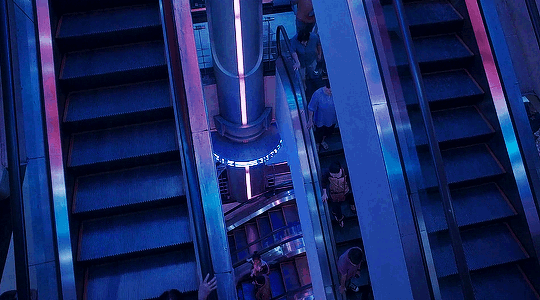
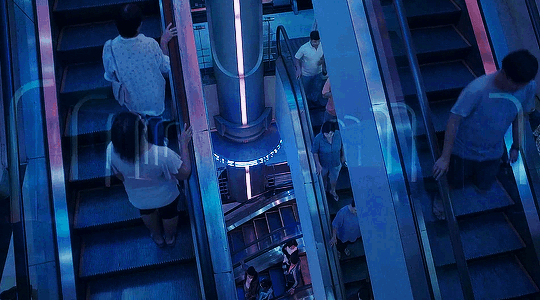




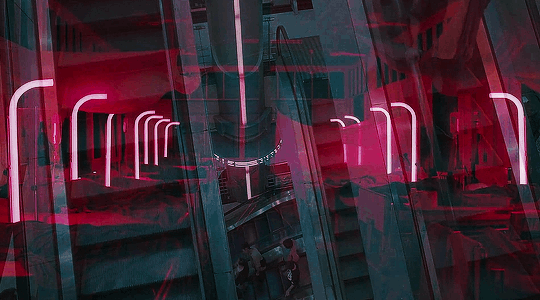

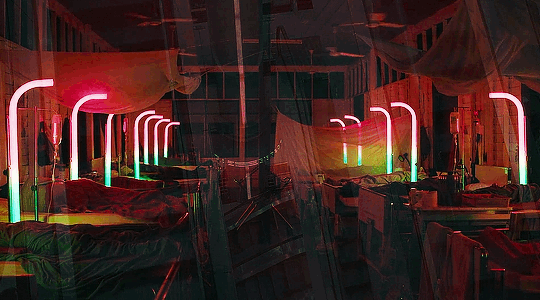

Cemetery of Splendour (2015) dir. Apichatpong Weerasethakul
#cemetery of splendour#apichatpong weerasethakul#worldcinemaedit#thaimovieedit#southeast asian cinema#filmauteur#filmgifs#thai cinema#cemetery of splendor#thai movie#rak ti khon kaen#รักที่ขอนแก่น#ellisgifs#rewatched this last night.... it was an Experience
104 notes
·
View notes
Photo










9 notes
·
View notes
Photo






cemetery of splendour (apichatpong weerasethakul, 2015)
67 notes
·
View notes
Photo










1. Kagero-za, Seijun Suzuki (1981) 2. It’s in the Game, Sondra Perry (2017) 3. ART IS IN LIFE, Iwona Lemke-Konart (1984) 4. L'Abécédaire de Gilles Deleuze: E comme Enfance, Pierre-André Boutang (1988-89) 5. Gloria, John Cassavetes (1980) 6. Destruction, Jadwiga Singer (1978) 7. Devil You Know, Don Elder (2020) 8. Rak Ti Khon Kaen, Apichatpong Weerasethakul (2015) 9. The Radiant, The Otolith Group (2012) 10. The Sacrifice, Andrei Tarkovsky (1986)
7 notes
·
View notes
Photo

Apichatpong Weerasethakul - Cemetery of Splendour
#apichatpong weerasethakul#cemetery of splendor#rak ti khon kaen#palette#film#movie junkie#film geek#cinema#cinephile#cinematography#art
0 notes
Text

Las manos de Apichatpong Weerasethakul
Apichatpong Weerasethakul’s hands
Films:
‘Dokfa nai meuman’ (2000)
‘Sud sanaeha’ (2002)
‘Sud pralad’ (2004)
‘Sang sattawat’ (2006)
‘Loong Boonmee raleuk chat’ (2010)
‘Ashes’ (2012)
‘Mekong Hotel’ (2012)
‘Rak ti Khon Kaen’ (2015)
#cinema#cine#movies#peliculas#film#movie#cinematography#cinephile#films#cinegraphia#apichatpong weerasethakul#weerasethakul#thai#thailand#uncle boonmee who can recall his past lives#ma#mekong hote
6 notes
·
View notes
Photo




Rak Ti Khon Kaen (Cemetery of Splendour) dir. Apichatpong Weerasethakul, 2015
0 notes
Photo

'Rak ti Khon Kaen' a.k.a.Cemetery of Splendour(2015)
2 notes
·
View notes
Text
MGA16: Eligible Films
10 Cloverfield Lane | A Bigger Splash | El Abrazo de la Serpiente | Alice Through the Looking Glass | Allegiant | American Honey | American Pastoral | Aquarius | Aquí No Ha Pasado Nada | Arrival | Ausência | Bad Moms | Batman v Superman: Dawn of Justice | Before I Wake | Bellas de Noche | Ben-Hur | The BFG | The Big Short | The Birth of a Nation | Blair Witch | Boi Neon | Bølgen | Brooklyn | By the Sea | Cameraperson | Captain America: Civil War | Captain Fantastic | Carol | Chevalier | Chronic | Cinema Novo | El Clan | El Club | The Conjuring 2 | Creed | The Danish Girl | Deadpool | Deepwater Horizon | La Delgada Línea Amarilla | Demolition | Desde Allá | Desierto | Die Geliebten Schwestern | Digging for Fire | Doctor Strange | Don’t Breathe | Las Elegidas | Everybody Wants Some!! | Fantastic Beasts and Where to Find Them | The Fifth Wave | Finding Dory | Forushande | Fuocoammare | Ghostbusters | The Girl on the Train | Green Room | Hacksaw Ridge | Hail, Caesar! | The Hateful Eight | Heimatland | High-Rise | The Hollars | Indignation | Inferno | Into the Grizzly Maze | Ixcanul | Jason Bourne | Joy | The Jungle Book | Juste la Fin du Monde | Keeping Up With the Joneses | Knight of Cups | Kubo and the Two Strings | Kung Fu Panda 3 | La Larga Noche de Francisco Sanctis | Legend | The Light Between Oceans | Lights Out | Listen to Me Marlon | The Lobster | Louder than Bombs | Love & Mercy | Loving | Maggie’s Plan | Manchester by the Sea | Meadowland | Mediterranea | Me Estás Matando Susana | O Menino e o Mundo | Midnight Special | As Mil e Uma Noites: Volume 1 | Mike and Dave Need Wedding Dates | Miss Peregrine’s Home for Peculiar Children | Moana | Mon Roi | Un Monstruo de Mil Cabezas | Morgan | Mustang | Neighbors 2: Sorority Rising | The Neon Demon | Neruda | Nerve | The Nice Guys | Nie Yin Niang | Nocturnal Animals | Now You See Me 2 | Office Christmas Party | Ouija: Origin of Evil | Paraíso Perdido | Passengers | El Patio de mi Casa | Pete’s Dragon | Potosí | The Prophet | The Purge: Election Year | Que Horas Ela Volta? | Queen of Katwe | Rak ti Khon Kaen | The Revenant | Rogue One | Room | Sabrás Qué Hacer Conmigo | Saul Fia | Sausage Party | The Secret Life of Pets | The Shallows | Sing | Sing Street | Sonita | Spotlight | Sr. Pig | The Stanford Prison Experiment | Star Trek Beyond | Storks | Suicide Squad | Sully | Swiss Army Man | Tangerine | Taxi | Tempestad | Las Tinieblas | Le Tout Nouveau Testament | Triple 9 | Trolls | Very Semi-Serious | La Vida Inmoral de la Pareja Ideal | El Viento Sabe que Vuelvo a Casa | Warcraft | Welcome to Me | The VVitch | X-Men: Apocalypse | Youth | Zootopia
4 notes
·
View notes
Photo
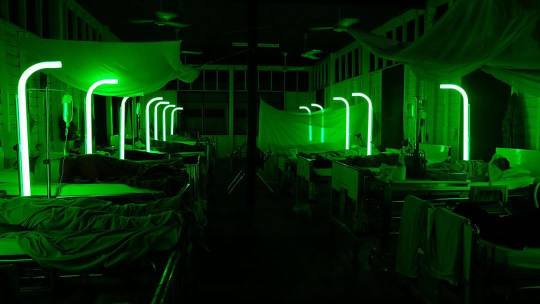
CEMENTERIO DE ESPLENDOR Cemetery of Splendour / Rak ti Khon Kaen | 2015 | Dir. Apichatpong Weerasethakul Aunque el director tailandés Apichatpong Weerasethakul no sea creyente, su obra fílmica se caracteriza por una fuerte carga espiritual ligada al budismo predominante en su tierra natal. Como el ejemplo más evidente de este peculiar fenómeno podemos citar "La Leyenda del Tío Boonmee" (Loong Boonmee raleuk chat; 2010), película ganadora de la Palma de Oro en el Festival Internacional de Cannes hace seis años en la que fluctúan tanto el plano espiritual como el terrenal plasmándose en pantalla mediante una hipnótica estética onírica. "Cementerio de Esplendor", su más reciente propuesta, se decanta por una estética completamente realista, dejando de lado el surrealismo y las atmósferas sugestivas del apartado visual, aunque manteniendo una belleza sobrecogedora y el aura mística siempre como un elemento presente aunque imperceptible al ojo humano. --- #larecomendacióndeldía #cinealternativo #cementeriodeesplendor #cemeteryofsplendour #recomendaciónfílmica #apichatpongweerasethakul #cinetailandés
#larecomendacióndeldía#cinealternativo#apichatpongweerasethakul#cinetailandés#cemeteryofsplendour#recomendaciónfílmica#cementeriodeesplendor
2 notes
·
View notes
Text
We Are Such Stuff As Dreams Are Made On: Cemetery of Splendour (Rak Ti Khon Kaen / รักที่ขอนแก่น 2015)
Last night, my sleep was filled with a series of vivid dreams, featuring the appearance of abundantly metaphorical imagery and almost-forgotten figures from my past. It was a deep and continuous sleep, and long. The evening prior, I finished myriad small but important tasks that I’d either forgotten or been putting off, and I did so with a vigorous energy previously hidden by layers of lethargy and procrastination. That afternoon, I watched Apichatpong “Joe” Weerasethakul’s Cemetery of Splendour (Rak Ti Khon Kaen / รักที่ขอนแก่น 2015). There’s a certain kind of film that reminds me of something Richard Brody once wrote, a sort of peek into his critical psyche, in a piece on the state of independent film in 2016:
"In any case, movies, and art over all, don’t help, can’t help, aren’t meant to help—in the short term or in specific terms. The good they do reaches deep into the marrow of the soul of a relatively few people and does so spontaneously, unexpectedly, irresistibly, decisively, and sometimes even unconsciously. The changes that the best movies wreak may not be perceptible in any reasoned public discourse close to the time of their release. But, for just that reason, these movies are all the more essential and enduring—they bring about changes in mood, tone, emotional tenor or temperature, changes in the inner life, in the inner inner life."
Most of the time, the film that reminds me of this quote is by Terrence Malick, or Andrei Tarkovsky, or even Shane Carruth (Upstream Color (2013)), whose images are often objects of delirious beauty. But Apichatpong here conjures another form of beauty, one less indebted to the realm of painting and photography and, thus, one that is more cinematic. Cemetery of Splendour moved me ineffably, and to try to render it less ineffable (more effable?) feels like an act of violence. Somehow, the best thing I can say about it is that it renewed my sense of the life force both within and surrounding me, motivating me from a within that’s outside of me, as it were. But since that’s way too vague, let’s get violent. Let’s say that what distinguishes the moving picture from the regular ol’ picture is the fact that the moving picture, um, moves. Yet this simple fact can sometimes be lost on cinemagoers and even filmmakers. The most common form of film “movement” is the cut, and when done well it evokes all the thoughts and emotions a good montage is supposed to. But that’s really less a movement and more a juxtaposition, a forcing of contrasts. Another common form of movement in film is the movement of the camera, most notoriously in the “shaky cam” cinematography that apparently only Paul Greengrass can do well. Usually, though, camera movements are tracking something within the frame, or emphasizing a character’s frame of mind, or even attempting to induce a frame of mind in the viewer (think of the camera placement in horror films). These are movements in the service of something else, and it can appear also in the manipulations of form in great works of literature, among other artistic media. No, what I have in mind, what this film showed me for the first time, is the kind of movement that’s in itself unexpected, radical, miraculous. It can happen in everyday life at any moment. The true magic of cinema is in capturing movement of this kind along with whatever it is that makes it astounding. Apichatpong’s camera is static, and his shots are long. But unlike the images of some of the aforementioned filmmakers, his images and compositions aren’t centered on beauty, natural or otherwise; in fact, some lingering shots are objectively ugly. What they do, and what Apichatpong wants them to do, is capture some kind of human action: a woman hanging laundry, the soldiers’ digging machines going at it, a man taking a shit among bushes and low trees. These actions are mundane, but the emphasis on their banality gathers the emotional, even sublime strength that’s non-cathartically released near the end of the film. That is the movement I have in mind: a single action both mundane and sublime. Cemetery of Splendour is about Thai soldiers who succumb to an inexplicable sleeping illness while digging a foundation for a secret government project (one character notes: And yet they dig out in the open!). Jen (Jenjira Pongpas) volunteers at the local “hospital” (an old schoolhouse) where the soldiers are taken care of, and there she befriends Keng (Jarinpattra Rueangram), a young woman who uses her powers as a psychic medium to assuage worried family members that their sons are doing okay. This is the first hint that the film is more than it appears to be, not only because everyone treats her with respect, including the doctors and nurses, but even more because psychics, of course, usually communicate with the dead. The soldiers seem to be having bad dreams, so the doctors bring in machines that employ light therapy to help calm them. Each machine has a long, curving LED tube (“They look like funerary urns,” one characters says) that changes color in tandem with the other machines as if each color were rising from the ground. The film has numerous scenes of the room and its furiously spinning ceiling fans slowly changing color in the dark of night, and this otherworldly imagery becomes a motif, a theme, and even a symbol for the film as a whole, reinforced by the sound effects of more significant scenes (ceiling fans, digging machines, night sounds) bleeding into the preceding and subsequent scenes. Jen, who has a bad leg, often prays at a Laotian shrine. One day as she’s enjoying some longgan at a picnic table, two beautiful women walk up to chat. Turns out, they’re the goddesses to whom she prays, and they come to thank her and to tell her that the sleeping sickness is caused by the still-warring ancient kings buried in the palace ruins beneath the school, who siphon off the soldiers’ energy. Here I should point out that, as talk of soldiers, kings, and Thailand should’ve hinted at by now, Cemetery of Splendour is on one level a political allegory, but it’s “about” politics the same way that Moby-Dick is “about” whaling: Yes, you can learn a whole frickin’ lot about whaling from reading it, but it’s so much more than a whaling manual. And Cemetery of Splendour is at one remove from even that—good luck learning much from the film about Thailand’s political troubles. Jen takes particular care of a soldier named Itt (Banlop Lomnoi), whose family doesn’t come to visit. For the viewer, he’s the stand-in for all the sleeping soldiers; for Jen, he’s the conduit to a unique perspective on life. One day, he suddenly wakes up and tells the surprised Jen that he could hear and understand everything around him while asleep. (Later at a night market stall, he adds that he can hear, smell, and perceive the heat of everything around them to an extended distance.) They and the other awakened soldiers go to the canteen for a meal. One soldier falls asleep, and the film implies that the rest of them do as well. Thus is the pattern of the film established: When Itt is awake, we follow his interactions and conversations with Jen; when he’s asleep, the film is free to do other things—follow Jen around, yes, but also give us haunting imagery of the sleeping soldiers and, in one mesmerizing sequence, of various nighttime scenes around town. There is never the sense of being haunted in the Western sense, as if unseen spirits were following people around, attempting to communicate or effect changes—the scariest scene is probably when Jen discovers that Itt’s notebook is filled with sketches that seem to depict the underground palace. The existence of something more than this empirical world is simply presumed, and when events are attributed to its influence, they and it are adapted to quickly and naturally. For instance, when the goddesses reveal themselves to Jen, she’s at first understandably shocked, but then they share the longgans together. And when Jen relates the explanation of the warring ancient kings to Keng and head nurse Tet (Petcharat Chaiburi), one of them jokes that at least the soldiers are kept useful in their sleep. Ingeniously, this attitude is forced on us by the film’s very premise: If we tried to explain the sleeping sickness, we would immediately get stuck, and the rest of the film would become meaningless. Only by taking it on its own terms, as it takes the lived-in mystery of its world, can we appreciate the artistry before our eyes. (I dare you to try to explain the scene, almost repeated later in the film, of pondside parkgoers rotating among benches as if playing a silent game of musical chairs.) The final main sequence intimately and powerfully brings together the two dimensions that Apichatpong toys with throughout the film. Jen and Itt are having a picnic when he falls asleep again. It’s a beautiful day, so she’s in no rush to get him back; who knows, he might wake up again. Keng passes by and offers to help them communicate. Itt (through Keng) asks Jen if she’d like to see what he sees, and she says yes. So he inhabits Keng’s mind (“possesses” would be too strong, since she’s still in control and can use her earthly perceptive faculties), and Keng and Jen take a walk through a park, which turns out to be a real-life famous religious park dotted with religious mantras and sculptures, some of them in ruins. Itt describes through Keng the ancient palace they’re walking through, pointing out thresholds and low ceilings, mirrors and thrones. Jen obligingly directs her gaze, and sometimes points out worldly things for Itt/Keng to look at, too: trees, leaves, sculptures, and flowers that she helps cultivate. They come across a pair of sculptures—a loving couple on a bench, holding hands, and beside that the same couple, now skeletons—and sit on a bench nearby. Jen shows Itt/Keng (but really Itt) her bad leg, rolling up her trouser to reveal its elephantine deformity. She offers Itt a homemade remedy to keep him awake, but instead he takes it from her, pours it onto Jen’s bad leg, and starts kissing it where the liquid has flowed. Amazingly, this scene works if we understand Itt/Keng to be either Keng or Itt: the psychic attuned to the other world, or the sleeping soldier inhabiting it. Itt/Keng’s ablutions and intimate blessings bring Jen to tears, and we too feel the full force of the connection between this world and the other world that ensconces it. But the film has one last surprise in store. Jen asks Itt/Keng to open her vision, and Keng stares into Jen’s eyes, telling her to open them wider, wider. And then: done. We don’t see any change, either directly, or indirectly through Jen’s actions, but by this point we’re far beyond doubting. The penultimate scene pairs a morning dance-aerobics session in the park with a soundtrack of an oracular French spoken song about a brick wall pretending to be soft and welcoming. And as if we, too, see this wondrous flowering brick wall, the final scene is a shot of Jen, staring in the direction of some boys playing soccer in the dug-up field, but really staring into the other world, wide-eyed. The soldiers’ plight is never resolved, as the goddesses foretell, but it’s rumored that the government will be moving them soon.
View On WordPress
#allegory#cinematography#editing#emotion#non-Hollywood#plot#politics#sound#symbolism#apichatpong weerasethakul#cemetery of splendour#film review#this is the whole thing
0 notes
Photo
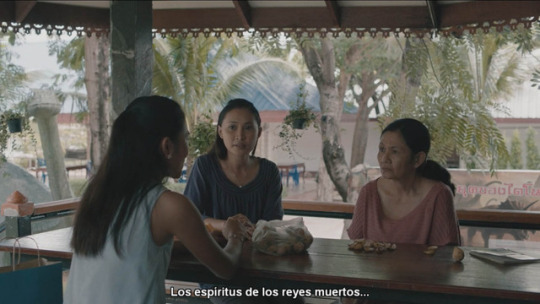
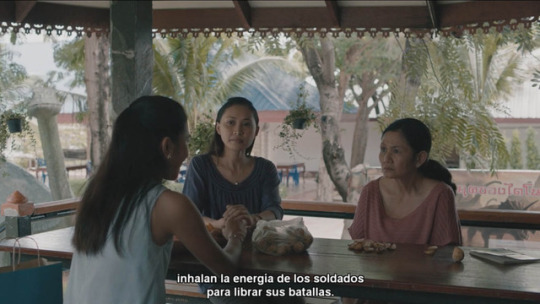
Cemetery of Splendor (Rak ti Khon Kaen). 2015. Dir. y Guión: Apichatpong Weerasethakul.
Jenjira Pongpas, Banlop Lomnoi, Jarinpattra Rueangram
Trailer: https://youtu.be/4TbesYapfv4
0 notes
Link
0 notes
Text

#Weerasethakul ft. #Weerasethakul
Films:
‘Mekong Hotel’ (2012)
‘Rak ti Khon Kaen’ (2015)
#cinema#cine#movies#movie#film#cinematography#peliculas#films#cinegraphia#cinephile#apichatpong weerasethakul#thailand#thai
1 note
·
View note
Photo

1 note
·
View note
